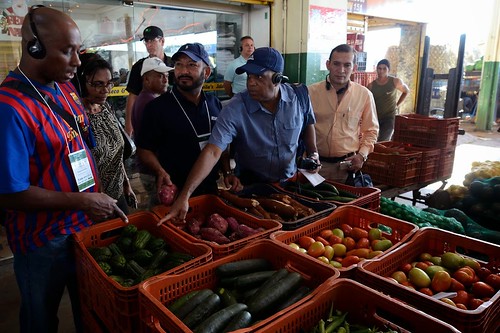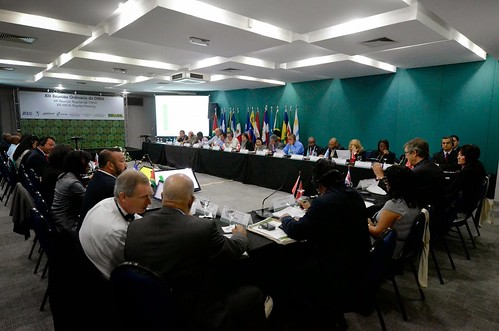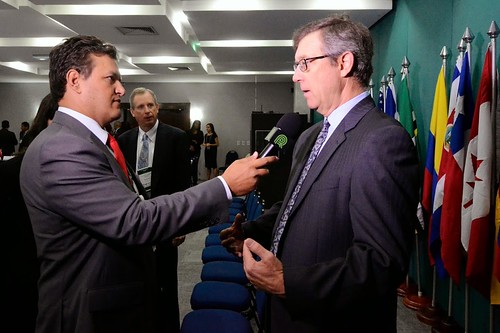
Quality data is paramount when it comes to helping markets reach their full potential. This is especially true in the agriculture industry where businesses are always searching for reliable data that can help them make important decisions like what to produce or how much to buy. I recently joined a team of USDA employees from my agency -- the Agricultural Marketing Service (AMS) -- and the Foreign Agricultural Service (FAS) that traveled to Brazil to share how we collect and disseminate key market data to help buyers and sellers make informed decisions.
Our trip to Brazil presented several opportunities to increase transparency in the inter-connected global marketplace. The primary purpose of the trip to Brasilia was to participate in the Regular Meeting of the Market Information for the Organization of the Americas (MIOA), which brings together a network of 33 member countries to collect, process, analyze, and disseminate information relative to markets and agricultural commodities.
We were invited to hold a presentation about our market collection techniques for senior Brazilian government officials and lead technical specialists. For 100 years, AMS Market News has collected and disseminated price, volume, and other critical data for businesses across the globe. As an independent, third-party organization with employees stationed at wholesale markets, auctions, and similar locations, we can quickly gather and send out reports that accurately capture the pulse of various commodity markets.

Recognizing the value of our system and how a similar system could benefit Brazilian producers, handlers, and marketers, they asked us to share our methodology and practices for accurately collecting and distributing timely and reliable information. We were honored to meet with the Minister of Agriculture, Livestock and Food Supply (MAPA), Neri Geller, to discuss the opportunity of a formal cooperative agreement between the two countries. After a successful meeting, the next step will be a letter from Minister Geller to Secretary Vilsack formalizing the arrangement. For AMS Market News, the first step would be to assess the country’s market reporting capabilities and practices and then make recommendations.
The second largest country in the MIOA and the sixth largest in the world, Brazil is a critical trading partner. While it’s a major competitor with the U.S., it is still the 17th most popular destination for U.S. agricultural exports. Increasing the country’s market transparency can improve trade between the countries in areas such as beef. It can also help Brazil feed its population of more than 200 million people.
Increasing Brazil’s market transparency will also improve the MIOA’s overall standing. Already the strongest economy in South America, other countries in the region can benefit from an improved agricultural sector that can expand its exports of key commodities like coffee, soybeans, and beef thanks to more accurate market data. This type of work has improved the MIOA in the past. Similar agreements made with Mexico and India helped these countries strengthen their agricultural market information systems to the benefit of domestic and international interests.
Both countries left the meeting feeling optimistic about the future. In 2013, the U.S. exported a record $1.6 billion of food and farm exports to Brazil in 2013. This figure stands to improve as both countries benefit from improved market data. AMS and the rest of us here at USDA are committed to finding ways to facilitate marketing opportunities for U.S. agricultural businesses. We will continue to participate in domestic and international groups to realize these opportunities.

